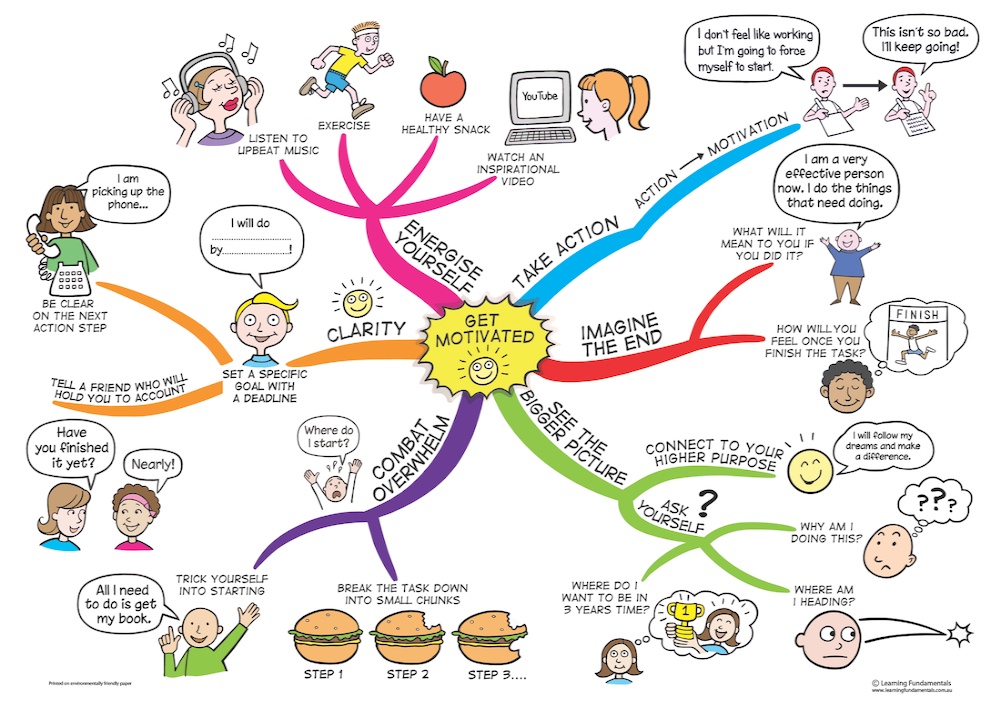
Have you been putting something off?
You know how it goes. One part of your brain says –
“Stop procrastinating. Just get on with it. Finish it!”
But then another part screams-
“But I don’t want to!”
It may not be anything major, but the task keeps niggling at the back of your mind. It can leave you feeling unsettled, slightly annoyed and stressed.
Here’s the thing: you can’t be fully at peace until you complete the task. Why? Because the Ziegarnik effect is in full swing. The Ziegarnik effect is the tendency we have to worry about something we have started and haven’t yet finished.
But if you can just get it done, your brain will breathe a sigh of relief. You will feel lighter. Chances are you will have turbocharged energy levels too.
As Jack Canfield states in his book “The Success Principles” –
“the quicker you move through [your] incompletes, the clearer your mind will be and the more “attention units” you’ll have to dedicate to those things that can really make a difference in your life”.
At the very least, you’ll feel some relief as you go to cross the task off your ‘To do’ list.
So here are some ways to motivate yourself at anytime to complete tasks and projects you keep putting off-
Consider how life will be better
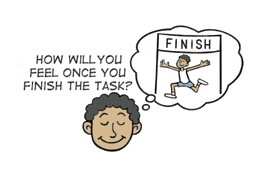 Whatever the task is – no matter how painful and boring – consider all the good things that will come once it’s finished.
Whatever the task is – no matter how painful and boring – consider all the good things that will come once it’s finished.
Perhaps you will feel more energized as a result of being one step closer towards achieving a long term goal.
The benefit could simply be that you no longer feel bogged down by it. You can reclaim a little more peace of mind and energy for other new and exciting projects.
Scare yourself into action
A little fear can be a good source of motivation.
So ask yourself the question –
What is the cost (financial, social and emotional) of continuing to put this task off?
You need to be careful with this strategy. Please don’t freak out. We all know that freaking out never helps. Too much fear can lead to paralysis.
But there’s no point keeping your head in the sand and ignoring the consequences of never doing the task.
I want you to be in action. So be real with yourself – get clear on what the cost will be to your life and others.
If this is too hard to imagine, then think of the last time you put off doing something. How much fun was that? Were you happy with the end result? Chances are things could have been better and less stressful.
Nail your feet to the floor
If you need to complete a task at your desk, imagine that your feet are nailed to the floor and your pants are glued to your chair. You can’t leave your desk until you finish the task.
To do this requires self discipline, focus and strength. You need to be ruthless with yourself – finish the task and then you can experience complete freedom from your desk and chair.
Get your dopamine firing
 To help you finish a particularly boring task, you need to get your dopamine firing. Dopamine is a neurotransmitter associated with the expectation of pleasurable experiences.
To help you finish a particularly boring task, you need to get your dopamine firing. Dopamine is a neurotransmitter associated with the expectation of pleasurable experiences.
Now typically when your brain thinks of doing a boring project, dopamine isn’t released. The gates to your dopamine are firmly closed.
So how can you open up your dopamine floodgates?
By simply combining the task with some upbeat music that you really enjoy, people who you enjoy spending time with or your favourite café (go and order your favourite drink).
Triggering dopamine can help you to get tasks done and dusted. It helps the process be less painful too.
Identify why you can’t or won’t do it
Often we don’t take action on a task because we are stopped by mental barriers.
How do you tackle a mental barrier?
Take some time (say 2 – 5 minutes) to explore what is stopping you from taking action.
In my experience, when people get stopped it usually comes down to one of three things–
1. Lack of clarity – “I don’t know where to start”
2. Sense of overwhelm – “Argh! I feel overwhelmed by the size of the task”
3. Lack of skill/knowledge – “Help! I don’t know how to do this!”
Here’s how you can tackle each mental barrier –
The solution to lack of clarity
 If you don’t know where to start, then start anywhere. Preferably, start with what is most appealing and interesting for you.
If you don’t know where to start, then start anywhere. Preferably, start with what is most appealing and interesting for you.
If you have to write an essay, don’t feel like you need to start with the first sentence. Start anywhere. Some writing is better than no writing. Just remember, you can’t edit a blank document. You need something to work with.
The solution to overwhelm
If you feel overwhelmed by the size of the task, break it down into really small bite size chunks. Ask yourself –
“What is the smallest action step I can take that will move me towards completing this task?”
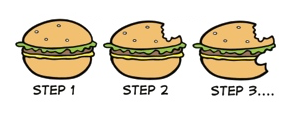 You need to make things actionable for your brain. For instance, “pick up textbook” or “Find article on mindfulness and self control”. If the task is fuzzy or ill-defined, chances are you won’t do it.
You need to make things actionable for your brain. For instance, “pick up textbook” or “Find article on mindfulness and self control”. If the task is fuzzy or ill-defined, chances are you won’t do it.
The solution to not knowing how to do something
Finally, if you’re stopped because you don’t know how to do something – google it or ask someone who knows. You can save a lot of time and energy by doing this.
In the early days of doing my PhD I would spend hours (sometimes days) frustratingly reading books, trying to figure out how to do certain things for my research project. When I’d go meet with my supervisor, the issue would usually be resolved in a couple of minutes!
Your time is a finite resource so make the most of it.
Start before you feel ready
“I’ll just read one more article before I start writing this essay” or “I’m not motivated to start now but tomorrow things may be different” – does this sound familiar?
The reality is you are never going to feel ready or motivated to start doing some tasks. You just need to start.
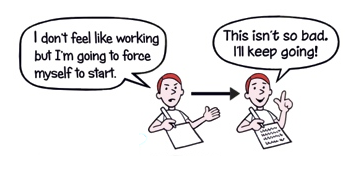 As productivity coaches Hugh Kearns and Maria Gardiner state in their Nature article “Waiting for the motivation fairy” –
As productivity coaches Hugh Kearns and Maria Gardiner state in their Nature article “Waiting for the motivation fairy” –
“You have to start before you feel ready; then you’ll feel more motivated, and then you’ll take more action”
Share This:
I understand this cringe factor.
In high school, goal setting felt forced. I’d think, “Why are they making me do this?” and “What’s the point?”.
However, once I got to university, I realised that goals are a helpful life strategy.
In this article, I want to share my perspective on goal setting and how this strategy has helped me to get things done.
I’m going to tell you:
• What goals are
• Why you’d want to have them
• How to stick at them
• Why you need to protect your goals from destructive outside forces
Let’s go!
Goals are things you want to do. Perhaps you want to write a book, jog around the block every morning, start a podcast, get a part-time job to save money or learn to play an instrument. These are goals.
• Goals give your life a sense of purpose
• Goals give your life meaning and a reason to get out of bed
• Goals help to focus your mind on what you want/need to do
• Goals help you to create a better, less boring life
As Giovanni Dienstmann explains in his book Mindful Self Discipline:
“We all need to aspire to something and feel that we are going somewhere. Otherwise, there is a sense of boredom in life. Our daily routine feels stale and unengaging. As a result, we seek relief through bad habits, and seek engagement through mindless entertainment, news, social media, games, etc.”
Have you ever set a goal, you felt excited, but then that excitement quickly dissipated, and you gave up on the goal?
Whenever this happens, it’s easy to think, “Goal setting doesn’t work!”.
However, the problem isn’t with goal setting as a strategy.
The problem is that motivation is completely unreliable (it comes and goes). Plus, you were probably never taught how to achieve your goals in the first place.
In other words, you were set up to fail.
There’s a lot of pretty average advice out there about goal setting. I’ve heard dozens of goal setting pep talks, and many can be summed up like this:
“Set a goal, make it SMART (specific, measurable, achievable, relevant, and time-bound), break it down, blah, blah, blah.”
Most students tune out when they hear these pep talks. You can feel the energy being sucked out of the room.
This advice doesn’t work for most people. And it’s incomplete.
I’ve found that the following simple ideas can make a big difference in helping you move from inaction to action when it comes to pursuing your goals:
Achieving big long-term goals requires consistently engaging in small behaviours over time. You need to chip away and develop habits to get there.
For instance, after taking a hiatus from writing books (because I felt stuck and overwhelmed by the idea), I finally started writing down my ideas.
By starting small.
I told myself all I had to do was open the Word document and write one sentence. And the sentence didn’t even have to be good! But I had to do this every single day.
If I wanted to write more than one sentence, I could. But one sentence was my absolute minimum. Most days, I wrote at least a paragraph. But when I didn’t feel great, I would show up and write one sentence.
Nine months later, I had a draft manuscript ready to send to my editor.
Many different behaviours can help you achieve your goal. The first step is to brainstorm all the possible behaviours that can help you move closer to it.
One way to do this is with BJ Fogg’s tool, Swarm of Behaviors (also known as Swarm of Bs).
Here’s what you do:
You write your goal/aspiration/outcome (whatever you want to achieve) in the middle of a sheet of paper. Then, you spend a few minutes listing all the behaviours that will help you achieve it.
Dr Fogg stresses:
“You are not making any decisions or commitments in this step. You are exploring your options. The more behaviors you list, the better.”
When I was brainstorming behaviours that could help me to write my next book, I came up with the following list:
1. Use an Internet blocker app and block myself from distracting websites
2. Carry a notepad and pen with me everywhere I go (to capture ideas)
3. Write one sentence every morning
4. Speak my ideas into a voice recorder when I go for a walk
5. Use the Write or Die app
6. Manage my inner critic (when it strikes, say to myself, “It can’t be all bad!”)
7. Give myself a pep talk each day (e.g., “Done is better than perfect!”)
8. Do Julia Cameron’s morning page activity (i.e., free writing)
9. Attend a writing retreat
10. Sign up for the ‘Turbocharge your writing’ course
11. Pick up a mind map, select an idea and use it as a writing prompt
Once you’ve finished brainstorming potential behaviours, go through your list and select just a few behaviours to get the ball rolling (I selected #1, #3, and #6).
It’s well worth spending a couple of minutes making each of these behaviours ‘crispy’ (i.e., specific). For instance, for Behaviour #1, I decided which websites I would block myself from using and at what times.
When we work towards big life goals, the process is never neat or linear. Showing up and doing whatever you need to do (even just writing one sentence) can feel like a daily grind. Mild discomfort usually infuses the whole process.
Accept that’s how it is. It will sometimes feel like a hard slog, but the rewards are worth it.
The long-term rewards of working on your goals far outweigh the superficial rewards of scrolling through social media, watching Netflix, etc.
Even if you don’t achieve what you initially set out to do, chances are you’ll still be better off than you were before. Why? Because you’ll have learnt a bunch of new skills and life lessons.
Be careful who you share your goals with. Some people delight in stamping all over your goals and crushing your hopes and dreams.
For example, when I was 10 years old, I started attending drama classes outside of school. These classes were a lot of fun and quickly became the highlight of my week.
I remember thinking, “When I grow up, I want to run a drama academy to help boost kids’ confidence”.
I felt inspired by this idea. Drama had helped me come out of my shell and I wanted this for other kids who were lacking confidence. So, I decided to be brave and share my plans with my primary school teacher at the time.
I was expecting Mr D to say, “Good for you, Jane!”. But instead, he said with a smirk, “How do you think you’re going to do that?”
And then he started grilling me with questions . . .
“Where will you get the money from to set this up?”
“Who is going to come to your classes?”
“Where do you plan on running these classes?”
On and on Mr D went.
Ugh. “Just stop Mr D!” I wanted to scream.
I was left feeling crushed.
So, take it from me: Be careful who you share your goals with. Because some people get a kick out of squashing stuff (e.g., your dreams).
But nowadays, there’s a more powerful (and often overlooked) force that can mess with your goals: social media
If you’re constantly checking social media and looking at what other people are doing, that’s time and energy you could have spent working towards your goals. But that’s only part of the story . . .
Social media exposes you to a hodgepodge of content: the best bits of people’s lives, advertising, conspiracy theories, and outrage-inducing influencers. All this noise messes with your goals by subtly shifting and changing your worldview, beliefs, attitudes, and what you view as important in life.
In his brilliant book Stand Out of Our Light: Freedom and Resistance in the Attention Economy, ex-Google strategist and now Oxford-trained philosopher James Williams shares his struggles with this. He states:
“. . . I felt that the attention-grabby techniques of technology design were playing a nontrivial role. I began to realise that my technologies were enabling habits in my life that led my actions over time to diverge from the identity and values by which I wanted to live. It wasn’t just that my life’s GPS was guiding me into the occasional wrong turn, but rather that it had programmed me a new destination in a far-off place that it did not behoove me to visit. It was a place that valued short-term over long-term rewards, simple over complex pleasures.”
He adds:
“…I found myself spending more and more time trying to come up with clever things to say in my social posts, not because I felt they were things worth saying but because I had come to value these attentional signals for their own sake. Social interaction had become a numbers game for me, and I was focused on “winning” – even though I had no idea what winning looked like. I just knew that the more of these rewarding little social validations I got, the more of them I wanted. I was hooked.
. . . I had lost the higher view of who I really was, or why I wanted to communicate with all these people in the first place.”
When you go on social media, you need to realise that there are thousands of highly intelligent people on the other side of the screen and it’s their job to figure out how to capture and exploit your attention.
In short, the values and goals of these big tech companies are not aligned with your values and goals. Facebook’s first research scientist Jeff Hammerbacher summed it up nicely when he said:
“The best minds of my generation are thinking about how to make people click ads . . . and it sucks.”
Take a moment to think of the people who you admire. How would you feel if you saw them spending vast amounts of time distracted and obsessed with social media?
I’ll leave you with this powerful quote from author Adam Gnade:
“Would you respect them [your biggest hero] as much if you saw them hunched over their phone all day like a boring zombie? No, you want them out there in the world doing heroic things, writing that great novel/song/whatever, saving the planet, standing up for the disenfranchised, or whatever else it was that made you love them in the first place. Let’s try to be as good as our heroes.”
Whatever you want in life, work out what you need to do to get there (i.e., the concrete behaviours), and then roll up your sleeves and get started.

About 10 years ago I met the beloved Australian celebrity Costa Georgiardis from the television show Gardening Australia.
I was blown away by Costa’s energy and enthusiasm.
He was exactly like he appeared on TV. But he wasn’t hamming it up for the camera. Costa was the real deal.
He was high on life.
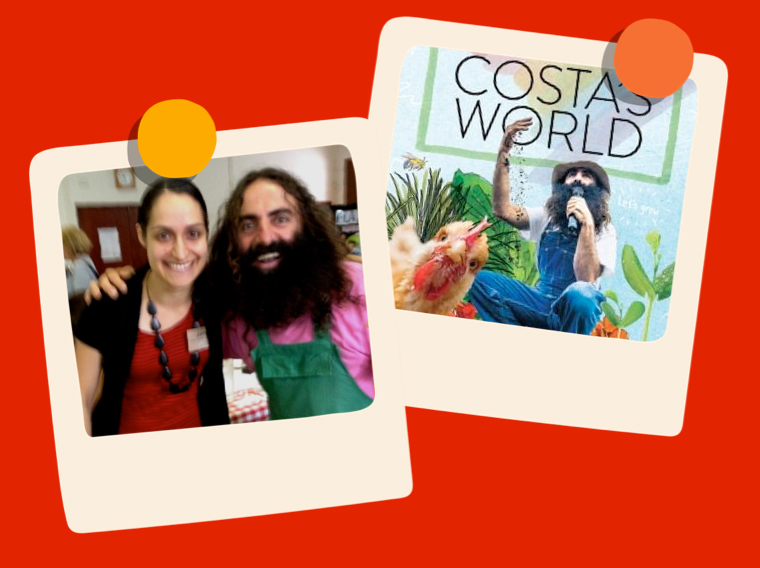
I’ve heard that people often ask Costa “Why are you so energetic?”, “Why are you so up?”, and “Don’t you get tired?”
Some people feel tired just being around Costa (check out this video to get a sense of Costa’s energy).
What’s the difference between motivated and energised people and less motivated people who struggle to get off the couch?
According to Stanford professor Dr Andrew Huberman the difference has everything to do with dopamine.
In this blog post, I want to explore how dopamine works and how you can adjust your dopamine levels to experience more motivation, focus, and energy in a safe and healthy way. Let’s go!
Dopamine is a neurotransmitter that is involved in reward processing. Your brain releases this molecule whenever it anticipates a reward.
In a healthy brain and environment, dopamine plays an important role in keeping you motivated, focused, and on track with your goals.
Unfortunately, this natural feedback system can be hijacked by big tech companies and fast food corporations.
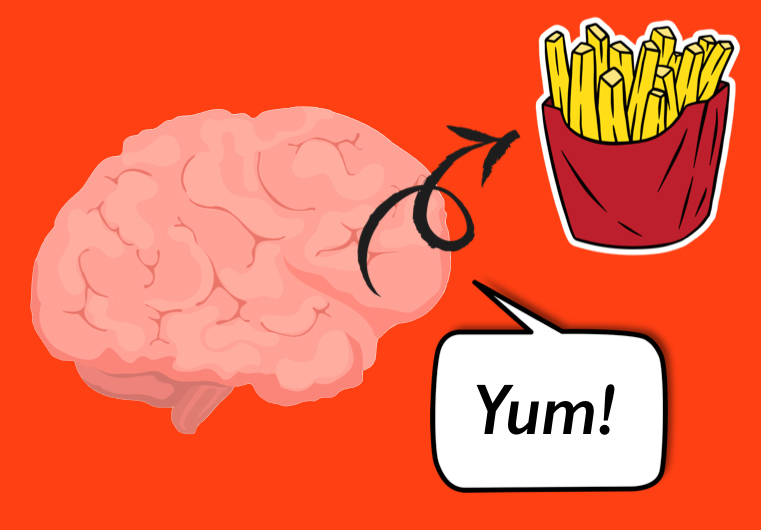
Tonic dopamine is your baseline level of dopamine that circulates through your system. People who are generally enthusiastic and motivated have a high baseline dopamine. But if you struggle with motivation and often feel lethargic, chances are you have a low baseline dopamine.
But then there’s phasic dopamine. This is where you experience peaks in dopamine above your baseline level. These peaks occur as a result of engaging in certain behaviours and/or consuming certain substances.
For example, social media companies train users to seek out quick, easy, and frequent hits of dopamine. Fast food companies engineer foods that have just the right amount of salt, fat and/or sugar to release big spikes in dopamine. This make you want to eat more of the food product and keep going back for more.
It’s important to understand that these peaks in dopamine don’t last.
After engaging in a dopamine-rich activity, you will experience an inevitable drop in dopamine. And this drop will be below your baseline level.
It should come as no surprise that when you’re in a dopamine deficit state you don’t feel very good. You experience pain and discomfort.
According to Psychiatrist Dr Anna Lembke this is our brain’s way of trying to bring everything back into balance and establish homeostasis.
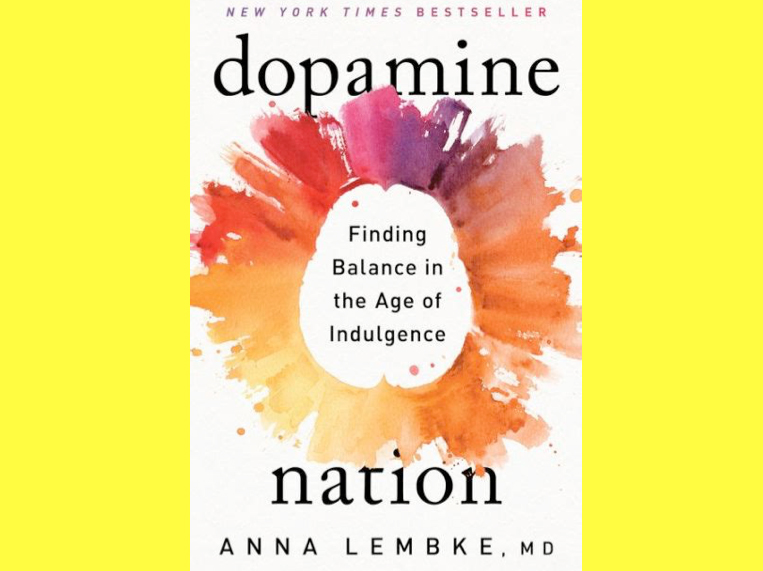
In the book Dopamine Nation Dr Lembke talks about how pleasure and pain are experienced in overlapping regions of the brain. She states:
“Pleasure and pain work like a balance”.
If you tip to the side of pleasure or pain, self regulatory mechanisms kick in to bring everything back into balance.
But you never want to tip to one side for too long. Dr Lembke states:
“With repeated exposure to the same or similar pleasure stimulus, the initial deviation to the side of pleasure gets weaker and shorter and the after-response to the side of pain gets stronger and longer, a process scientists call neuroadaptation . . . we need more of the drug of choice to get the same effect.”
In other words, consuming more of a dopamine-rich substance or behaviour is bad for your brain. It will leave you in a dopamine-deficit-state.
And when you’re in this state, it’s much harder to do your school work.
There are a number of simple things you can do to regenerate your dopamine receptors and increase your baseline dopamine. I’ve listed several strategies below.
Before you start your work or study, you want to avoid engaging in activities that will cause spikes in dopamine. If you watch TikTok videos or play video games before sitting down to do your homework, this is going to make your work feel a lot more painful and boring.
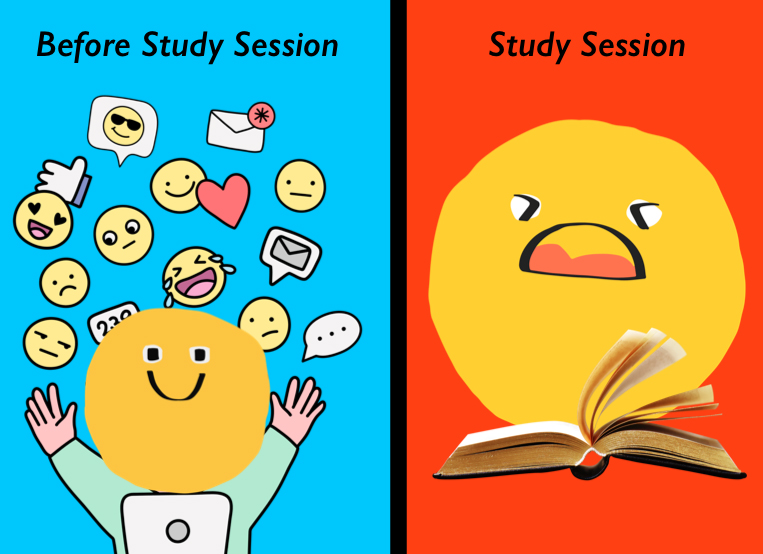
Here’s why . . .
Dr Huberman states that how motivated you feel to do a task depends on your current dopamine levels and what previous peaks in dopamine you have experienced. This is important to understand because with this knowledge, you can create routines and habits to conserve your dopamine and motivation for pursuing your goals.
With this in mind, I’ve recently simplified my morning routine in the following ways:
• I don’t start the day by looking at my phone or computer
• I exercise without listening to music
• I have a healthy breakfast of overnight oats and berries rather than a super sweet smoothie
• I have a cold shower (more on why I do this below)
Whilst this may sound boring, it’s had a dramatic impact on how easy it is for me to get stuck into doing my work.
The term ‘Dopamine Detox’ is a little misleading since it’s technically not possible to detox from dopamine. Nevertheless, the idea is a good one.
When you engage in a dopamine detox, you’re taking a break from engaging in dopamine-rich activities (e.g., consuming junk food, going on social media, and watching Netflix). This will give your dopamine receptors a chance to regenerate.
After taking a dopamine detox, you’ll probably notice that simple things like eating basic wholefoods or going for a walk are much more pleasurable. As Dr Huberman points out:
“Our perception for dopamine is heightened when our dopamine receptors haven’t seen much dopamine lately.”
Research shows that cold water therapy (i.e., being submerged in cold water) can increase your dopamine by 250% above your baseline level.
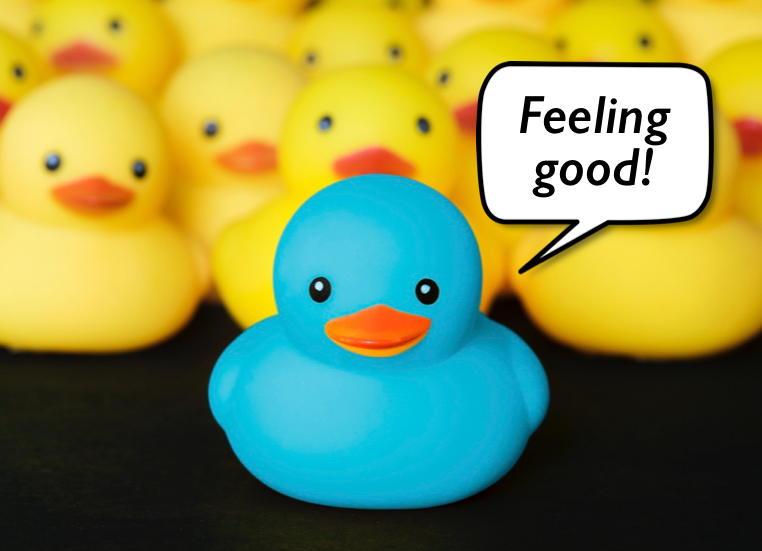
Let’s put that in context:
Chocolate increases dopamine by 150% above baseline
Alcohol increases dopamine by 200% above baseline
Nicotine increases dopamine by 225% above baseline
Cocaine increases dopamine by 350% above baseline
Amphetamines increases dopamine by 1100%
You need to remember that these peaks in dopamine are followed by a sudden crash below your baseline level. Let’s not overlook the fact that chronic substance abuse causes brain damage and can be fatal.
Unlike other addictive substances, cold showers create peaks in dopamine that can last for several hours. You also don’t experience the subsequent dramatic crash below your baseline level.
Word of warning: Before you turn on the cold shower tap or start running an ice-bath, it’s important to be aware that people can go into shock when plunging themselves into cold water. Please be careful!
If cold showers aren’t really your thing, try increasing your dopamine with exercise. Exercise has been found to increase dopamine by 130% above your baseline level.
In the book Move The Body, Heal The Mind, neuroscientist Dr Jennifer Heisz says:
“Exercise increases dopamine and repopulates dopamine receptors to help the brain heal faster during recovery [from addiction]. Although all forms of exercise can do this, runner’s high may do it best.”
Look for ways to make it harder to engage in the dopamine-rich activities. Create barriers and/or friction points to stop you from mindlessly seeking quick shots of dopamine.
For example, I recently noticed I had a problem with compulsively checking my phone. Whenever I felt bored or lonely, I’d check my phone to see if I’d received any messages. I didn’t like the fact I was doing this but I found it hard to stop. What could I do?
I could use a dumb phone.
I found a ‘seniors’ flip phone that allowed me to do basic things like make calls and send texts. But sending texts is not easy! I have to type in each letter and change from upper to lower case. It really puts you off wanting to text your friends.
Since switching to a dumb phone, the number of times I touch my phone each day has significantly decreased.

As you do your work, praise yourself for the effort you’re putting in. Doing this can increase the dopamine you have for the activity.
Dr Huberman suggests saying the following while you’re doing painful work:
“I know this is painful. But you need to keep at it. Because it’s painful, it’s going to increase my dopamine later and I’m doing this by choice.”
We live in a dopamine-rich world. It’s so easy to flood your brain with quick hits of dopamine that feel good in the moment but leave you feeling flat and irritable shortly after. These peaks in dopamine make it harder for us to pursue our goals by undermining our motivation.
No matter what your current dopamine baseline is, just remember this: you have the ability to increase your dopamine in a healthy and sustainable way. Kick-start the process today!
It’s around this time of year that many people set big goals for themselves.
“This year is going to be different. I’m going to be more organised. Eat Healthier. Exercise more . . .”
Does this sound familiar?
Up until recently, this was me. I used to be obsessed with setting goals at the beginning of the new year.
In fact, I was part of an international goal setting community of productivity enthusiasts (yes, there’s such a thing). At the beginning of every year, we would meet up online and work in pomodoros (i.e. 25 minute sprints), setting goals and creating plans for the year.
I’ll admit, I loved it.
Here I was hanging out with people that were just as obsessed with effective work habits and productivity as I was! I felt like I had found my people.
But I recently stopped attending the goal setting sessions.
Quite frankly, I’d had enough.
Now I don’t want to give the impression that I’ve turned into an unmotivated sloth. It’s not like I went from being a hardcore goal setter to anti-goal setting.
These days I’m just less obsessed about being super productive. I’m still setting goals (just different ones and not as many as before). For instance, this year one of my goals is to do more fun activities, such as drawing, drumming and hiking.
Ironically, what I’ve found is in not trying so hard to power through my to-do list, I’m actually getting more meaningful stuff done. Plus, I’m a bit more relaxed about life, which is a good thing.
In his brilliant book Four Thousand Weeks: Time Management for Mortals Oliver Burkeman argues that being too focused on the future can suck the joy out of life.
I saw a lot of myself in Burkeman’s story. To give you a little background, Burkeman is a reformed productivity geek. He used to write a column for a newspaper on productivity hacks. So he has experimented with dozens of time management and productivity techniques.
But interestingly, he found very few of these time management techniques actually worked. And the more he used them, the more stressed out and unhappy he became. The book Four Thousand Weeks is Burkeman’s attempt to try and make sense of things.
Four thousand weeks is the number of weeks you get if you make it to the ripe old age of 80.
The idea behind this book is simple: life is short. So what are you going to do with your 4,000 precious weeks?
Burkeman argues many time management books perpetuate myths and false ideas about time. Here are some of the myths:
If you just work harder and more efficiently, you’ll be able to do it all.
If you manage your time well, you’ll eventually get to a perfect place in the future where you are in control of time.
Burkeman says these ideas set up a rigged game. A game in which you try to do more and more to create a better future for yourself.
In trying to create this golden future where your life runs smoothly, you never feel satisfied in the present and you always feel like you’re running behind schedule. As a result, this stops you from enjoying what you’re doing right now. And when you think about it, that’s all we really have (this present moment).
Four Thousand Weeks is packed full of great insights and practical advice. Here are seven ideas from the book that really resonated with me:
It’s an illusion that you’ll be able to crank through all the things on your to-do list to finally clear the decks. Accept that there will always be more to do and your to-list will continue to grow. If you can be okay with that, life becomes a lot less overwhelming.
Burkeman suggests creating two to-do lists:
1) An open to-do list: containing everything you need to do but you’ll never get through.
2) A closed to-do list: containing a fixed number of entries (no more than 10 tasks).
When you complete a task on your closed list, only then can you add another item from your open list.
Burkeman suggests channelling your energy and attention on a handful of things that really matter to you. Don’t take on too many projects.
If you have lots of projects on the go, it’s too easy to not finish any of them. Why? Whenever one project gets a little uncomfortable or difficult, you switch over to another project.
All this bouncing around from one project to another means you end up with a lot of unfinished projects. Burkeman recommends focusing on one big work project at a time.
Any project that is important to you will bring up some discomfort and/or fear. “What if I’m not able to do it?” is a thought I frequently have whenever I start a new project. Since we don’t like experiencing these uncomfortable feelings, there’s always this urge to distract ourselves with digital technologies.
Burkeman suggests we get familiar with this discomfort. If you are able to tolerate the discomfort and get started on an important piece of work, it’s like a superpower. What you’ll find is you’ll be able to complete more important and meaningful tasks, which will motivate you to keep going.
It’s easy to fantasise about the future. I know I’m not the only person to have imagined running a marathon, publishing a best selling book and/or opening up a plant-based café.
In our minds, it’s so easy to see ourselves doing these things perfectly and with total ease and control. But what we usually find is when we attempt to do these things, reality is often out of sync with the fantasy in our heads.
You go for a run and your leg hurts. And by choosing to go for a run, you’re saying no to many other things you could potentially be doing.
Here’s my take on all of this: if given the choice between living in reality or fantasy land, choose reality every time. Sure, it’s messy. It’s imperfect. But it’s the real deal.
Since you only get one shot at this life, you might as well have a go at that thing you’ve always wanted to do (even if it makes you feel clumsy and awkward).
Not everything we do needs to bring us some financial, material or academic gain in the future. Some activities bring us pure enjoyment in the here and now.
Hiking is a perfect example of this. Burkeman says there’s no real purpose to hiking but you do it because it’s an inherently enjoyable experience.
Burkeman argues that an hour spent on social media is not just one hour wasted. That time bleeds into the rest of your day, impacting the way you feel, how you view the world and what you value.
To capture your attention, social media’s algorithms feed you the most sensational, outrageous and conspiratorial content. If you spend hours of your day on these platforms, there’s no question that this will distort your perception of reality.
What I took from this is if you want to think more clearly, get off social media.
Although Burkeman doesn’t go as far as saying this, he does suggest we make our devices as boring as possible. How do we do this?
By removing social media from them and changing the colour to grey scale. This way our devices appear more like tools than toys. It’s also makes it much harder for us to escape the discomfort (see point 3).
JOMO is the opposite of FOMO (Fear of missing out) – it’s the joy of missing out. Rather than feeling stressed out about not being able to go to every social event, celebrate the fact that you can’t possibly do it all nor would you want to!
The irony is the more social events you go to, the more you realise you’re missing out on. You’ll never win this game of trying to do it all, so don’t even bother trying to play. Burkeman continuously comes back to this powerful idea of choosing a few things you want to do from the menu of life.
I love this idea of treating life like a menu. When you go to a restaurant you don’t feel the pressure to try every dish on offer. You just pick the dish that appeals to you in that moment and then you forget the rest.
I think this is a great approach to life. You can’t do everything but you can do a few things with your 4,000 weeks. So pick the things that interests you the most and then dive right in and enjoy!
Dr Jane Genovese delivers interactive sessions on learning to learn, combating procrastination, exam preparation, how to focus in the age of distraction, habit formation and much, much more!
Get FREE study and life strategies by signing up to our newsletter:
© 2024 Learning Fundamentals